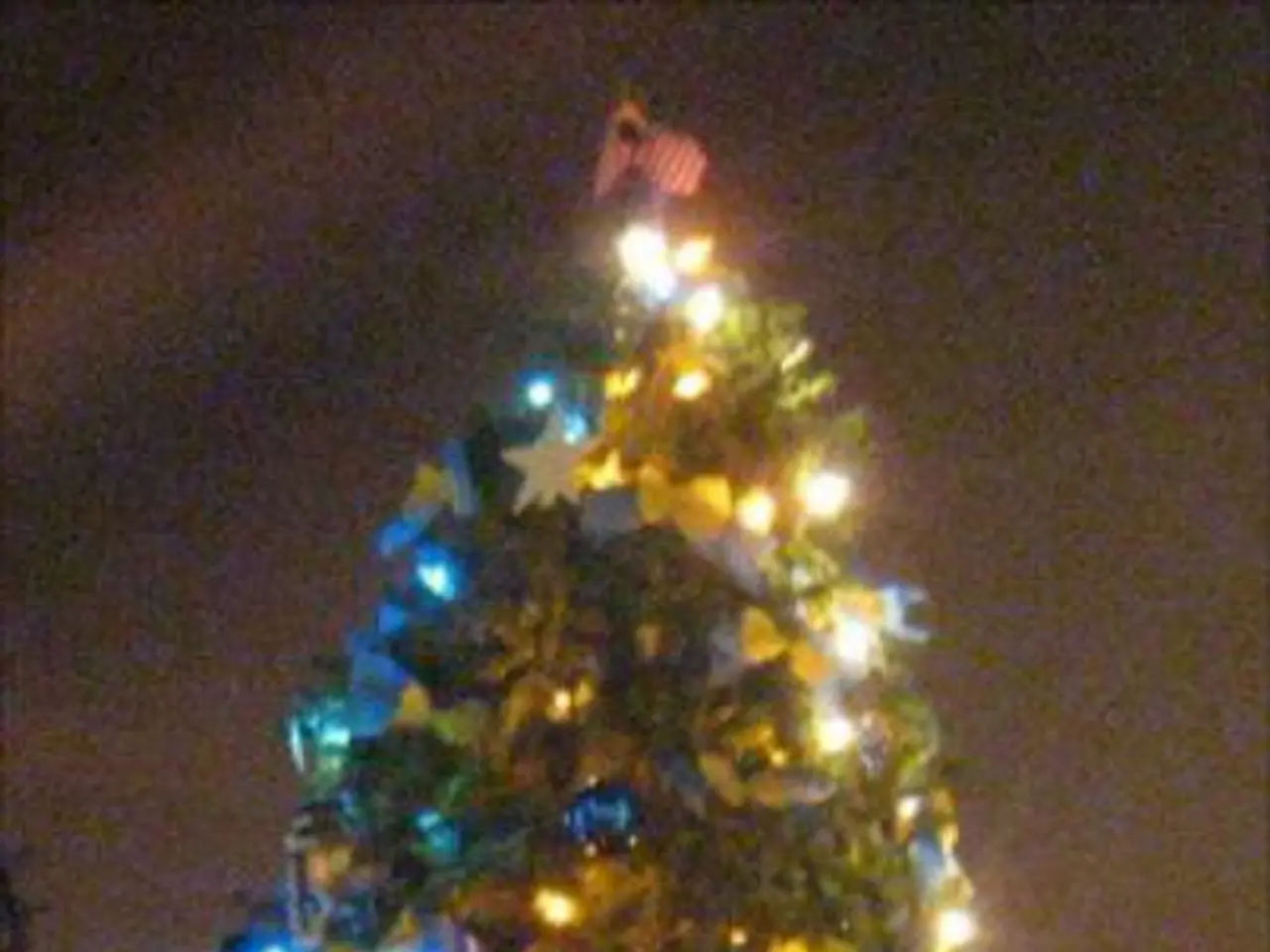Uncovering the Fascinating Historical Roots of Christmas Customs
In the spirit of the festive season, let's delve into the fascinating history behind some of our beloved Christmas traditions.
The custom of exchanging kisses under the mistletoe is rooted in ancient pagan societies, where the evergreen plant was revered as a symbol of fertility, peace, and vitality during midwinter celebrations. Originating from the Romans, Celts, Druids, and Norse, the tradition of mistletoe signified good fortune, encouraged fertility, and even created truces during conflicts. As enemies meeting under mistletoe would lay down their weapons to share peace and goodwill, the practice evolved into a symbol of peace, love, and connection [1][2]. By the 1800s, mistletoe was shaped into "kissing balls" and promoted as festive greenery in England [3][5].
The Yule log, another enduring Christmas tradition, has its origins in ancient Scandinavia, where it was a central feature of pagan midwinter celebrations. The Yule log was incorporated into Christmas traditions as a symbol of light overcoming darkness, particularly in Northern Europe [4]. In the 19th century, French pastry chefs transformed the Yule log tradition into the bûche de Noël, a sponge cake rolled to resemble a log and decorated with frosting.
The image of Santa Claus flying through the night sky in a sleigh pulled by reindeer owes its origins to Norse mythology. Odin, the god of poetry, wisdom, and war, rode across the sky on an eight-legged horse named Sleipnir. This mythological figure eventually morphed into the modern-day Santa Claus [6].
The tradition of gift wrapping can be traced back to ancient Asia, with furoshiki cloths used in Japan and silk cloths used in China for gift presentation [7]. Modern gift wrap became popular in the West due to a happy accident in 1917, when Joyce and Rollie Hall of Hallmark sold decorative French envelope lining paper [1].
The Christmas card tradition began in 1843, thanks to Sir Henry Cole, who commissioned the first commercial Christmas card. The advent calendar, a way to count down the days until Christmas, originated in 19th-century Germany, with early versions featuring candles, chalk marks, or devotional images [2]. The modern chocolate-filled advent calendar emerged in the mid-20th century, with British and American companies like Cadbury mass-producing them.
Finally, the fusion of ancient mythology and modern commercial storytelling created one of the most enduring and magical symbols of Christmas. Rudolph, the red-nosed reindeer, entered the story much later in 1939 as part of a marketing campaign by Montgomery Ward [6].
As we celebrate this festive season, let's appreciate the rich history and cultural significance behind our cherished traditions.
[1] https://www.history.com/news/the-history-of-christmas-cards [2] https://www.bbc.co.uk/history/traditional/christmas/customs_past_01.shtml [3] https://www.history.com/news/the-mystery-of-kissing-under-the-mistletoe [4] https://www.history.com/news/the-history-of-the-yule-log [5] https://www.history.com/news/the-history-of-mistletoe [6] https://www.history.com/news/the-history-of-santa-claus [7] https://www.history.com/news/the-history-of-gift-wrapping
- In the realm of entertainment, the enchanting tale of Rudolph the red-nosed reindeer emerged as a marketing strategy in 1939, becoming an iconic part of Christmas storytelling.
- The enthralling history of gift wrapping traces back to ancient Asia, with Japan and China using furoshiki cloths and silk for gift presentations respectively.
- A fascinating blend of science and history, the image of Santa Claus flying through the night sky on a sleigh pulled by reindeer roots back to Norse mythology, where Odin was depicted riding on an eight-legged horse.
- The top 10 list of favourite Christmas traditions would not be complete without the custom of exchanging kisses under the mistletoe, a practice rooted in ancient pagan societies.
- Beyond just education and self-development, understanding the origins of the Yule log highlights how it symbolizes light overcoming darkness and its significance in ancient Scandinavian midwinter celebrations.
- While general news typically does not revolve around sports, it's worth noting that the Christmas tradition of the Yule log was incorporated into Christmas celebrations as a symbol of light overcoming darkness, particularly in Northern Europe, thus impacting other traditions as well.




